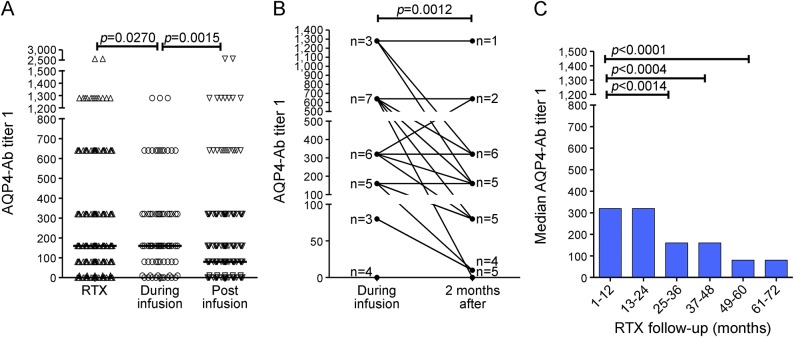Figure 3. Aquaporin-4 (AQP4) antibody (Ab) levels under rituximab (RTX) treatment: Short-term and long-term effects.
RTX effect on AQP4-Ab levels was studied. (A) AQP4-Ab titers during RTX therapy were studied (n = 316; median titer 160, range 0–2,560). AQP4-Ab levels were decreased (n = 224; median titer 80, range 0–2,560) after RTX infusions (>30 days, with undetectable levels of CD19+ B cells) compared to infusion time (n = 74; median titer 160, range 0–1,280). (B) Short-term effect of RTX treatment: AQP4-Ab levels in paired samples (n = 28) at RTX infusion time and 3 months after were evaluated and are shown in the graph. The numeric values of antibody titers in the paired samples during and 3 months after infusions are detailed in figure e-2. Each data point in the graph is representative of more than 1 sample (as indicated by n beside the data point) that displays the same levels of AQP4-Abs. A reduction in median titers was shown (median titer at infusion time 320; median titer 3 months after infusion 160; p = 0.0012; Wilcoxon matched-pairs test). (C) Long-term effect of RTX treatment: RTX effects on AQP4-Ab levels were evaluated in 72 months follow-up, showing a decrease in median annual titers (p < 0.0001; Kruskal-Wallis test).

